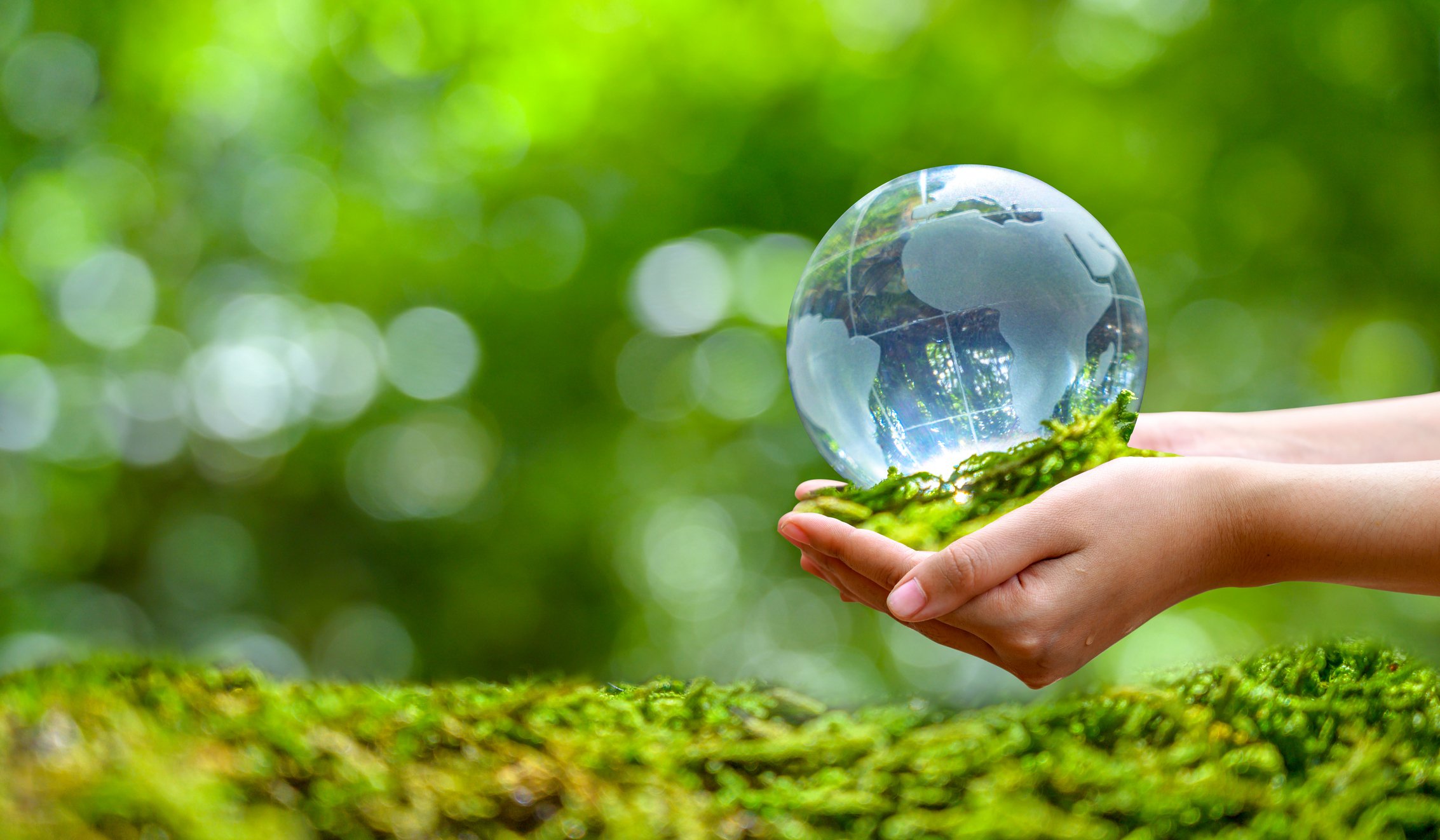

-
Paris to Replace Parking Spaces With Trees | The city’s new climate plan promises to drop speed limits, repurpose traffic lanes, remove 60k parking spots & create urban “oases” to combat extreme heat
cross-posted from: https://feddit.org/post/4897192
> archive.today link > > cross-posted from: https://slrpnk.net/post/15360304
- www.vox.com The climate crisis is here. We can still have a better world.
Aryana Elizabeth Johnson: What If We Get It Right explores hope in the climate crisis, a vision for the future and a strategy to build a better world.
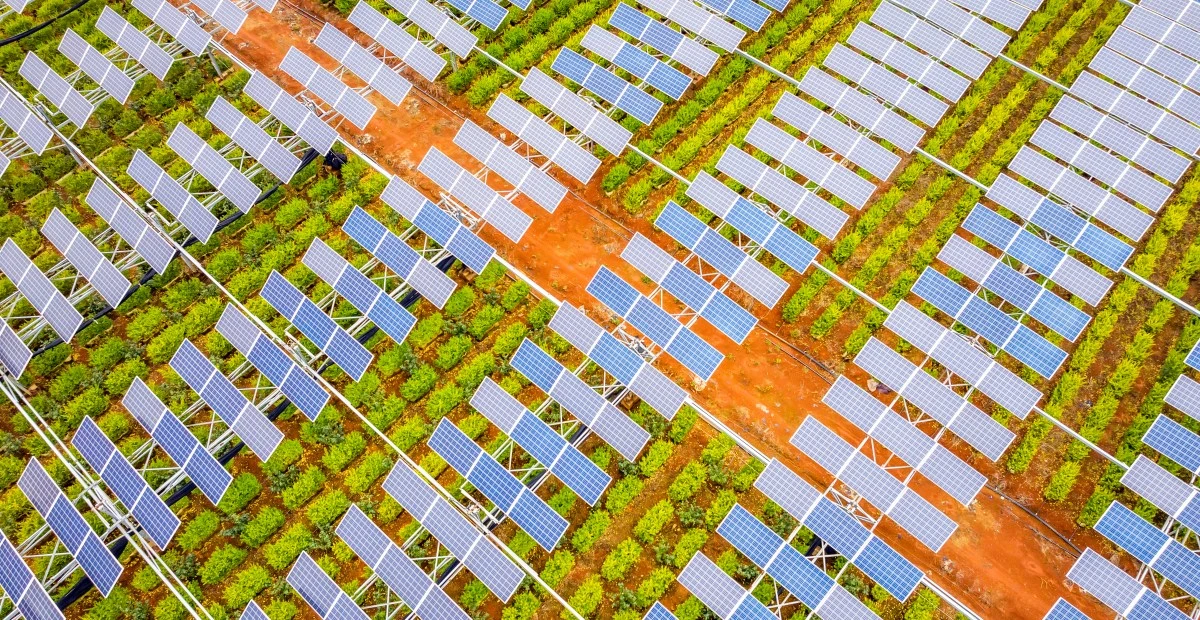
-
Biden Urged to 'Follow the Facts' as Study Shows LNG Emissions 33% Worse Than Coal
www.commondreams.org Biden Urged to 'Follow the Facts' as Study Shows LNG Emissions 33% Worse Than Coal | Common Dreams"The science is clearer than ever: LNG exports and natural gas-sourced hydrogen pose grave risks to our planet and will undermine President Biden's own climate goals," said one campaigner.
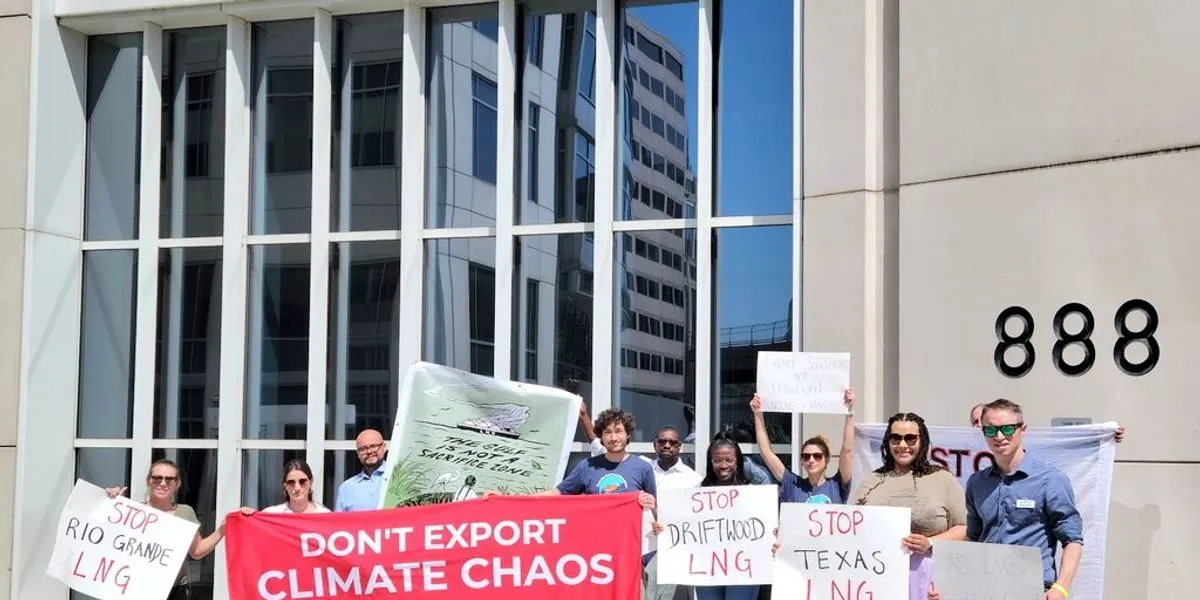
cross-posted from: https://lemmy.ml/post/20232082
> By Brett Wilkins > > September 12, 2024
- www.pv-magazine.com China could lead the world to net zero
China, with an 18% share of the global population, uses 26% of the world’s primary energy and emits 33% of the world’s energy-related CO2. The energy transition unfolding in the country isn’t merely a national affair as its ramifications echo globally, explains Mahnaz Hadizadeh, a researcher for con...
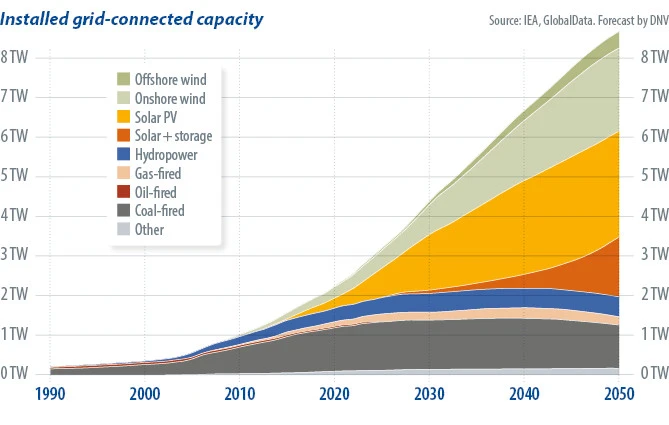
-
The science of protests: demonstrations are on the rise, and scientists are revealing which types work best
www.nature.com The science of protests: how to shape public opinion and swing votesDemonstrations are on the rise, and scientists are revealing which types work best.

Scientist Erica Chenoweth, who studies civil resistance at Harvard Kennedy School in Cambridge in the U.S., showed that every movement that mobilized at least 3.5% of a population was successful. This led to what’s known as the 3.5% rule — that protests require this level of participation to ensure change.
But the figure can be misleading, Chenoweth cautions. A much larger number of people are probably supporting a successful revolution even if they aren’t visibly protesting.
- apnews.com In Indonesia, women ranger teams go on patrol to slow deforestation
A female-led group of forest rangers in Indonesia are defying social norms to lead patrols in the jungle to combat deforestation.
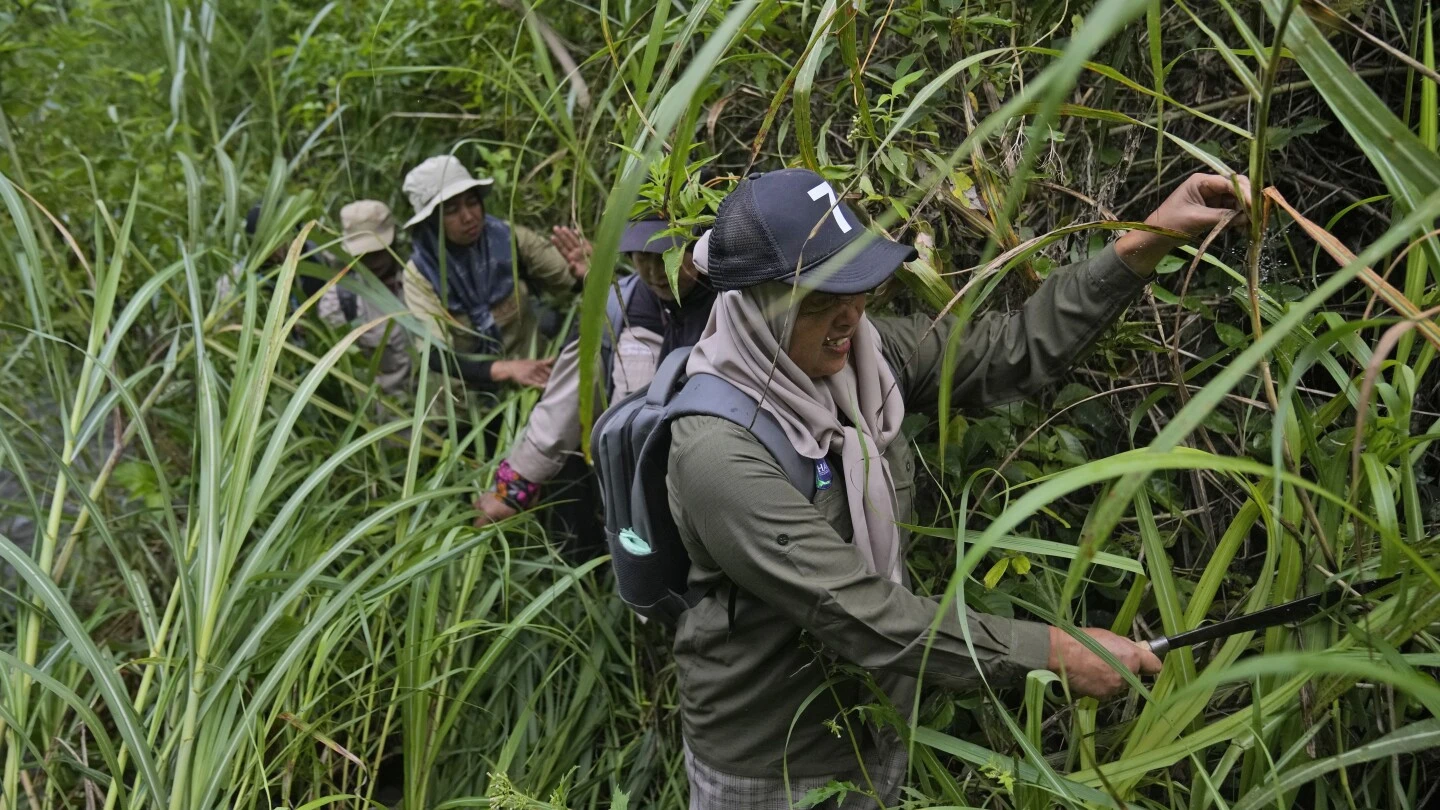
- www.bbc.com Conservation slowing biodiversity loss, scientists say
A first-of-its-kind study shows conservation is worth investing in, researchers say.

cross-posted from: https://lemmy.world/post/14705005
> Conservation actions are effective at reducing global biodiversity loss, according to a major study. > > International researchers spent 10 years looking at measures, from hatching Chinook salmon to eradication of invasive algae. > > The authors said their findings offered a "ray of light" for those working to protect threatened animals and plants.
- apnews.com New EPA rule says 200 US chemical plants must reduce toxic emissions that are likely to cause cancer
The rule advances President Joe Biden’s commitment to environmental justice.
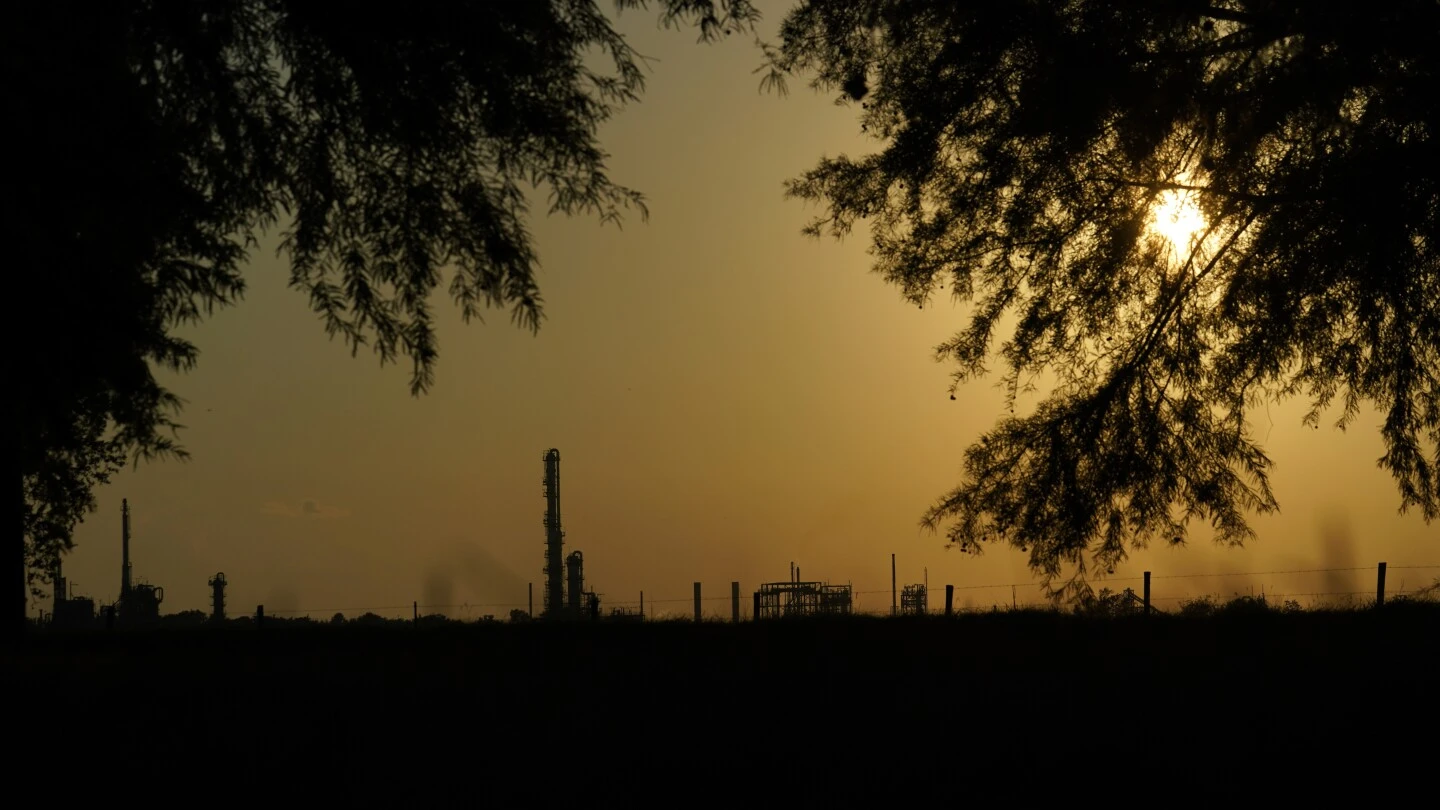
- www.bbc.com European court rules human rights violated by climate inaction
"We are not made to sit in a rocking chair and knit," said one of the older Swiss women who won.

- grist.org 'Reef stars' restored Indonesia's blast-damaged corals in just 4 years
A community-based approach to restoration using an ingenious device can bring back coral reefs traumatized by dynamite fishing.
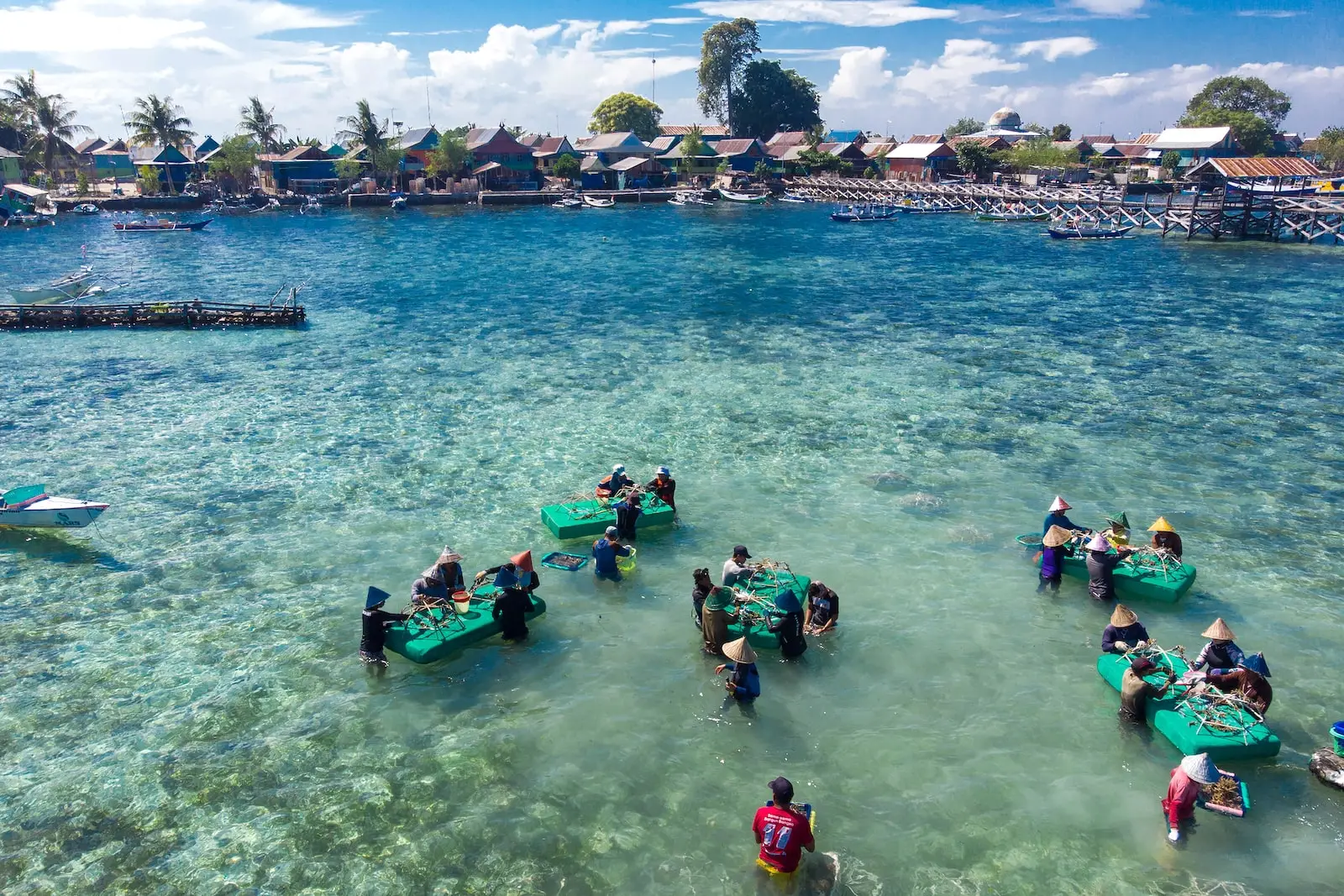
cross-posted from: https://slrpnk.net/post/8027175
> 'Reef stars' restored Indonesia's blast-damaged corals in just 4 years
-
This piece of paper could revolutionize human waste

YouTube Video
Click to view this content.
-
Direct Air Capture vs Thermodynamics (Cool Worlds)
- https://piped.video/watch?v=EBN9JeX3iDs
- https://www.youtube.com/watch?v=EBN9JeX3iDs
--- Video Description:
Direct Air Capture (DAC) has been getting more and more attention over the last few years. Could we avert climate change by pulling carbon dioxide out of the atmosphere? Could we not just stop, but actually reverse the damage done? Unfortunately, most don't fully appreciate just quite how much CO2 we've emitted and the outrageous scale of the problem facing us. Today, we apply the fundamental principles of thermodynamics to question whether this is even feasible.
Written & presented by Prof. David Kipping. Edited by Jorge Casas. Fact checking by Alexandra Masegian.
---
Channel Description:
Space, astronomy, exoplanets, astroengineering and the search for extraterrestrial life & intelligence.
The Cool Worlds Lab, based at the Department of Astronomy, Columbia University, is a team of astronomers seeking to discover and understand alien worlds, particularly those where temperatures are cool enough for life, led by Professor David Kipping.
---
CHAPTERS (and key bits)
- 0:00 Climate Change: Some CC is needed just to maintain a level.
- 2:44 Removal Requirements: We released 37 Gt of CO2 in 2022.
- 3:38 Possible Solutions: Trees are good for 4 years, then no space.
- 5:03 Introducing DAC: IPCC estimates 20 Gt/yr @ 2050 required.
- 5:43 Climate Anxiety: This video is sponsored by betterhelp.
- 7:12 DAC Principles: Currently 19 DAC plants remove 10'000 tCO2/yr, or 0.000003% of global emissions.
- 8:14 Scalability: Why this video focuses on physics, not economics
- 9:29 Thermodynamics: Why DAC is a fight against entropy, introducing Gibbs. Lower limit: 120 kWh/tCO2
- 12:08 Progressive DAC: Starting in 2025, remove how much and how fast?
- 13:32 RCPs: Why 2.6 is discarded, why 4.5 is chosen (with an outlook on 8.5)
- 15:09 Simulations: For 450 ppm, we need to scrub 20 GtCO2 in 2050. For 350, almost 80 Gt.
- 17:03 Energy Requirements: 450 ppm requires 5% of global electricity. 350: 15%.
- 19:34 Efficiency: Above numbers assumed 100% efficiency. Current estimate 5%, measured 8%.
- 21:21 Conclusions: It's tough to do, but just possible. Easiest way: Stop emitting.
- 24:35 Outro and credits
-
MIT: How to pull carbon dioxide out of seawater
news.mit.edu How to pull carbon dioxide out of seawaterMIT researchers may have found the key to a truly efficient and inexpensive mechanism for removing carbon dioxide from seawater. The method could be far more efficient than existing systems for removing the greenhouse gas from the air.
As carbon dioxide continues to build up in the Earth’s atmosphere, research teams around the world have spent years seeking ways to remove the gas efficiently from the air. Meanwhile, the world’s number one “sink” for carbon dioxide from the atmosphere is the ocean, which soaks up some 30 to 40 percent of all of the gas produced by human activities.
Recently, the possibility of removing carbon dioxide directly from ocean water has emerged as another promising possibility for mitigating CO2 emissions, one that could potentially someday even lead to overall net negative emissions. But, like air capture systems, the idea has not yet led to any widespread use, though there are a few companies attempting to enter this area.
Now, a team of researchers at MIT says they may have found the key to a truly efficient and inexpensive removal mechanism. The findings were reported this week in the journal Energy and Environmental Science, in a paper by MIT professors T. Alan Hatton and Kripa Varanasi, postdoc Seoni Kim, and graduate students Michael Nitzsche, Simon Rufer, and Jack Lake.
The existing methods for removing carbon dioxide from seawater apply a voltage across a stack of membranes to acidify a feed stream by water splitting. This converts bicarbonates in the water to molecules of CO2, which can then be removed under vacuum. Hatton, who is the Ralph Landau Professor of Chemical Engineering, notes that the membranes are expensive, and chemicals are required to drive the overall electrode reactions at either end of the stack, adding further to the expense and complexity of the processes. “We wanted to avoid the need for introducing chemicals to the anode and cathode half cells and to avoid the use of membranes if at all possible,” he says.
The team came up with a reversible process consisting of membrane-free electrochemical cells. Reactive electrodes are used to release protons to the seawater fed to the cells, driving the release of the dissolved carbon dioxide from the water. The process is cyclic: It first acidifies the water to convert dissolved inorganic bicarbonates to molecular carbon dioxide, which is collected as a gas under vacuum. Then, the water is fed to a second set of cells with a reversed voltage, to recover the protons and turn the acidic water back to alkaline before releasing it back to the sea. Periodically, the roles of the two cells are reversed once one set of electrodes is depleted of protons (during acidification) and the other has been regenerated during alkalization.
This removal of carbon dioxide and reinjection of alkaline water could slowly start to reverse, at least locally, the acidification of the oceans that has been caused by carbon dioxide buildup, which in turn has threatened coral reefs and shellfish, says Varanasi, a professor of mechanical engineering. The reinjection of alkaline water could be done through dispersed outlets or far offshore to avoid a local spike of alkalinity that could disrupt ecosystems, they say.
“We’re not going to be able to treat the entire planet’s emissions,” Varanasi says. But the reinjection might be done in some cases in places such as fish farms, which tend to acidify the water, so this could be a way of helping to counter that effect.
Once the carbon dioxide is removed from the water, it still needs to be disposed of, as with other carbon removal processes. For example, it can be buried in deep geologic formations under the sea floor, or it can be chemically converted into a compound like ethanol, which can be used as a transportation fuel, or into other specialty chemicals. “You can certainly consider using the captured CO2 as a feedstock for chemicals or materials production, but you’re not going to be able to use all of it as a feedstock,” says Hatton. “You’ll run out of markets for all the products you produce, so no matter what, a significant amount of the captured CO2 will need to be buried underground.”
Initially at least, the idea would be to couple such systems with existing or planned infrastructure that already processes seawater, such as desalination plants. “This system is scalable so that we could integrate it potentially into existing processes that are already processing ocean water or in contact with ocean water,” Varanasi says. There, the carbon dioxide removal could be a simple add-on to existing processes, which already return vast amounts of water to the sea, and it would not require consumables like chemical additives or membranes.
“With desalination plants, you’re already pumping all the water, so why not co-locate there?” Varanasi says. “A bunch of capital costs associated with the way you move the water, and the permitting, all that could already be taken care of.”
The system could also be implemented by ships that would process water as they travel, in order to help mitigate the significant contribution of ship traffic to overall emissions. There are already international mandates to lower shipping’s emissions, and “this could help shipping companies offset some of their emissions, and turn ships into ocean scrubbers,” Varanasi says.
The system could also be implemented at locations such as offshore drilling platforms, or at aquaculture farms. Eventually, it could lead to a deployment of free-standing carbon removal plants distributed globally.
The process could be more efficient than air-capture systems, Hatton says, because the concentration of carbon dioxide in seawater is more than 100 times greater than it is in air. In direct air-capture systems it is first necessary to capture and concentrate the gas before recovering it. “The oceans are large carbon sinks, however, so the capture step has already kind of been done for you,” he says. “There’s no capture step, only release.” That means the volumes of material that need to be handled are much smaller, potentially simplifying the whole process and reducing the footprint requirements.
The research is continuing, with one goal being to find an alternative to the present step that requires a vacuum to remove the separated carbon dioxide from the water. Another need is to identify operating strategies to prevent precipitation of minerals that can foul the electrodes in the alkalinization cell, an inherent issue that reduces the overall efficiency in all reported approaches. Hatton notes that significant progress has been made on these issues, but that it is still too early to report on them. The team expects that the system could be ready for a practical demonstration project within about two years.
“The carbon dioxide problem is the defining problem of our life, of our existence,” Varanasi says. “So clearly, we need all the help we can get.”
The work was supported by ARPA-E.
-
Small Modular Reactors Explained - Nuclear Power's Future?
YouTube Video
Click to view this content.
🤔 I legitimately do wonder why stuff like this and support for nuclear energy in general hasn't skyrocketed on account of climate change. It's the one large-scale means that we have to achieve clean energy with current technology, yet I see no governments pushing to replace coal plants with nuclear ones. You'd think the companies who own the coal plants would just accept the writing on the wall and switch to nuclear, if only to save themselves.
There's so much about humanity's tepid response to climate change in general that does not make sense to me, but the fact remains that nuclear is an important tool we have in our toolbox and we desperately need to start using it to prevent the real tragedy of runaway climate collapse.
What do you guys think? Do you think these small modular reactors will take off or nah?
- www.sciencedaily.com Potent greenhouse gas produced by industry could be readily abated with existing technologies: Affordable and available technologies can curb rising nitrous oxide emissions
Researchers have found that one method of reducing greenhouse gas emissions is available, affordable, and capable of being implemented right now. Nitrous oxide, a potent greenhouse gas and ozone-depleting substance, could be readily abated with existing technology applied to industrial sources.
Researchers have found that one method of reducing greenhouse gas emissions is available, affordable, and capable of being implemented right now. Nitrous oxide, a potent greenhouse gas and ozone-depleting substance, could be readily abated with existing technology applied to industrial sources.
"The urgency of climate change requires that all greenhouse gas emissions be abated as quickly as is technologically and economically feasible," said lead author Eric Davidson, a professor with the University of Maryland Center for Environmental Science. "Limiting nitrous oxide in an agricultural context is complicated, but mitigating it in industry is affordable and available right now. Here is a low-hanging fruit that we can pluck quickly."
When greenhouse gases are released into the atmosphere, they trap the heat from the sun, leading to a warming planet. In terms of emissions, nitrous oxide is third among greenhouse gases, topped only by carbon dioxide and methane. Also known as laughing gas, it has a global warming potential nearly 300 times that of carbon dioxide and stays in the atmosphere for more than 100 years. It also destroys the protective ozone layer in the stratosphere, so reducing nitrous oxide emissions provides a double benefit for the environment and humanity.
Nitrous oxide concentration in the atmosphere has increased at an accelerating rate in recent decades, mostly from increasing agricultural emissions, which contribute about two-thirds of the global human-caused nitrous oxide. However, agricultural sources are challenging to reduce. In contrast, for the industry and energy sectors, low-cost technologies already exist to reduce nitrous oxide emissions to nearly zero.
Industrial nitrous oxide emissions from the chemical industry are primarily by-products from the production of adipic acid (used in the production of nylon) and nitric acid (used to make nitrogen fertilizers, adipic acid, and explosives). Emissions also come from fossil fuel combustion used in manufacturing and internal combustion engines used in cars and trucks.
"We know that abatement is feasible and affordable. The European Union's emissions trading system made it financially attractive to companies to remove nitrous oxide emissions in all adipic acid and nitric acid plants," said co-author Wilfried Winiwarter of the International Institute for Applied Systems Analysis. "The German government is also helping to fund abatement of nitrous oxide emissions from nitric acid plants in several low-income and middle-income countries."
The private sector could also play a key role in nitrous oxide emissions reduction, encouraged by trends in consumer preferences for purchasing climate-friendly products. For example, 65% of the nitrous emissions embodied in nylon products globally are used in passenger cars and light vehicles. Automobile manufacturers could require supply chains to source nylon exclusively from plants that deploy efficient nitrous oxide abatement technology.
- www.space.com Scientists beam solar power to Earth from space for 1st time ever
The Space Solar Power Demonstrator's MAPLE experiment was able to wirelessly transfer collected solar power to receivers in space and direct energy to Earth.
A space solar power prototype has demonstrated its ability to wirelessly beam power through space and direct a detectable amount of energy toward Earth for the first time. The experiment proves the viability of tapping into a near-limitless supply of power in the form of energy from the sun from space.
Because solar energy in space isn’t subject to factors like day and night, obscuration by clouds, or weather on Earth, it is always available. In fact, it is estimated that space-based harvesters could potentially yield eight times more power than solar panels at any location on the surface of the globe.
The wireless power transfer was achieved by the Microwave Array for Power-transfer Low-orbit Experiment (MAPLE), an array of flexible and lightweight microwave power transmitters, which is one of the three instruments carried by the Space Solar Power Demonstrator (SSPD-1).
SSPD-1 was launched in January 2023 as part of the California Institute of Technology's (Caltech) Space Solar Power Project (SSPP), the primary goal of which is to harvest solar power in space and then transmit it to the surface of Earth.
"Through the experiments we have run so far, we received confirmation that MAPLE can transmit power successfully to receivers in space," Co-Director of the Space-Based Solar Power Project, Dr. Ali Hajimiri, said in a statement. "We have also been able to program the array to direct its energy toward Earth, which we detected here at Caltech. We had, of course, tested it on Earth, but now we know that it can survive the trip to space and operate there."
MAPLE demonstrated the transmission of energy wirelessly through space by sending energy from a transmitter to two separate receiver arrays around a foot away, where it was transformed into electricity. This was used to light up a pair of LEDs.
The instrument then beamed energy from a tiny window installed in the unit to the roof of Gordon and Betty Moore Laboratory of Engineering on Caltech’s campus in Pasadena.
Because MAPLE is not sealed, the experiment also demonstrated its capability to function in the harsh environment of space while subject to large swings in temperature and exposure to solar radiation. The conditions experienced by this prototype will soon be felt by large-scale SSPP units.
“To the best of our knowledge, no one has ever demonstrated wireless energy transfer in space, even with expensive rigid structures,” Hajimiri added. “We are doing it with flexible, lightweight structures and with our own integrated circuits. This is a first!”
In a video from Caltech, Hajimiri, who led the Caltech that developed MAPLE, explained how the wireless transmission of energy through space is based on a quantum phenomenon called “interference.”
Interference arises due to the wave-like nature of light. When two light waves overlap, if they are in phase, the waves align, and the peaks of the waves meet and create a greater peak with a height that is the sum of the two original peaks. This is called constructive interference.
If, however, the waves of light are out of phase and overlap while misaligned, a peak may meet a trough in the wave, and both are canceled out, a process known as destructive interference.
"If you have multiple sources that are operating in concert, in the same phase, you can actually direct energy in one direction so all of them will only add in one direction and will cancel each other out in all other directions," Hajimiri said. "The same way that a magnifying glass can focus light into a small point, you can actually control the timing of this in such a way that you can focus all of that energy in a smaller area than the area that you started with." Related stories
By precisely controlling the timing of this process, the direction of the energy can be adjusted very rapidly on a scale of nanoseconds, and power can be redirected to space-based receivers or even receivers here on Earth. Together this allows the energy to be directed to the desired location and nowhere else, and all this can be done without the need for any moving mechanical parts.
Hajimiri and his team are now assessing the performance of the individual units that comprise MAPLE. a painstaking process that will take as long as six months to complete. This will allow them to provide feedback that will guide the development of fully realized versions of the system in the future.
It is planned that SSPP will eventually consist of a constellation of modular spacecraft collecting sunlight, transforming it into electricity, and turning this into microwaves that are then beamed over vast distances, including back to Earth, where energy is needed. This could include regions of the globe currently poorly served by existing energy infrastructure.
"In the same way that the internet democratized access to information, we hope that wireless energy transfer democratizes access to energy," Hajimiri concluded. "No energy transmission infrastructure will be needed on the ground to receive this power. That means we can send energy to remote regions and areas devastated by war or natural disaster."
---------
Something like this would be really, really great in terms of providing 24/7 solar power without the baggage of battery storage, especially if fusion never pans out. Stuff like this should be up there with nuclear when it comes to this kind of talk, but I don't know if the rest of the world has put 2 and 2 together on it yet.
-
The Great Green Wall: An Initiative to Reforest the African Landscape
education.nationalgeographic.org The Great Green WallThe Great Green Wall initiative uses an integrated approach to restore a diversity of ecosystems in the North African landscape.
In Africa, scientists are hard at work restoring land once rich with biodiversity and vegetation. Eleven countries in the Sahel-Sahara region—Djibouti, Eritrea, Ethiopia, Sudan, Chad, Niger, Nigeria, Mali, Burkina Faso, Mauritania, and Senegal—have joined to combat land degradation and restore native plant life to the landscape.
In recent years, northern Africa has seen the quality of arable land decline significantly due to climate change and poor land management. Uniting under the banner of the “Great Green Wall” initiative, national and regional leaders hope to reverse this trend. The bulk of the work on the ground was originally slated to be concentrated along a stretch of land from Djibouti, Djibouti, in the east to Dakar, Senegal, in the west—an expanse 15 kilometers (nine miles) wide and 7,775 kilometers (4,831 miles) long. The project has since expanded to include countries in both northern and western Africa.
Land degradation typically stems from both human-related and natural factors; overfarming, overgrazing, climate change, and extreme weather are the most common causes. Beyond affecting land and the natural environment, land degradation poses serious threats to agricultural productivity, food security, and quality of life. Nowhere is this issue more urgent than in sub-Saharan Africa, where an estimated 500 million people live on land undergoing desertification, the most extreme form of land degradation.
Jean-Marc Sinnassamy is a senior environmental specialist with the Global Environment Facility (GEF). He helps manage a program developed under the Great Green Wall initiative with countries in the Sahel and West Africa. The GEF has been with the initiative since the beginning, helping to convene country leaders at the headquarters of the United Nations Convention to Combat Desertification in Bonn, Germany, in February 2011. The World Bank and other organizations focused on global development and the environment provide financial and technical support.
For Sinnassamy, the partnership represents a unique opportunity to work across the region with a solid political base.
“Here, we saw political leaders, heads of state, ministers in different countries wanting to work on common environmental issues and wanting to tackle land degradation issues together,” he says. “For us, this is a political blessing. We have to respond to this demand, and we have to capitalize on that.”
Integrated Landscape Approach
Beyond the project’s strong political foundation, its carefully crafted approach brings environmental benefits both locally and globally. The initiative uses an “integrated landscape approach” that allows each country to address land degradation, climate change adaptation and mitigation, biodiversity, and forestry within its local context.
“In this case, working to combat land degradation is the best way to address both very local issues and improve the global environment,” Sinnassamy says. “We are working with the land, which is the basis of livelihood in these communities. We are working with people to improve soil quality, which improves crop yield and in turn agricultural production and the overall quality of life in the community. These very local benefits are also a way to generate global benefits for water, land, and nature.”
In the end, Sinnassamy hopes the region as a whole will be composed of a “mosaic of landscapes” that increases biodiversity and maintains native flora as part of agricultural land. Each participating country has its own individual goals, which include reducing erosion, diversifying income, increasing crop yield, and improving soil fertility.
While trees and forests are only part of the focus of the Great Green Wall initiative, many in the media have cast the project as solely a tree-planting project and an attempt to halt the southward expansion of the Sahara Desert.
Sinnassamy is quick to point out two faults in this perception. The first is that the Great Green Wall initiative is much more nuanced than simply planting a belt of trees across the continent.
“Behind the name or the brand ‘Great Green Wall,’ different people see different things. Some people saw just a stripe of trees from east to west, but that has never been our vision,” he says. “In Niger, Mali, and Burkina Faso . . . natural regeneration managed by farmers has yielded great results. We want to replicate and scale up these achievements across the region. It’s very possible to restore trees to a landscape and to restore agroforestry practices without planting any trees. This is also a sustainable way of regenerating agroforestry and parkland.”
The second misperception Sinnassamy points to is that the Sahara Desert is not, in fact, expanding.
“We are not fighting the desert,” he says. “In the majority of the areas we are working in these 11 countries, the desert is not advancing. The [Sahara] Desert is a very stable ecosystem. Of course, there are some areas on the margins—for instance in Senegal, Mauritania, and Nigeria—where there are some sand movements. But from a geographic perspective, over time the desert has been relatively stable in this area.”
What Will It Take to ‘Build the Wall?'
Having spent the better part of a year planning, strategizing, and building partnerships with agencies on the ground, the Great Green Wall initiative is beginning to report positive early results. The project’s $2 billion budget, stemming largely from World Bank co-financing and partnerships fostered by the African Union, ensures participating countries will have the means to see the project through to the end.
Examples of success include more than 50,000 acres of trees planted in Senegal. Most of these are the acacia species Senegalia senegal, which has economic value for the commodity it produces, gum arabic. (Gum arabic is primarily used as a food additive.) A small portion of the trees are also fruit-bearing, which, when mature, will help combat the high levels of malnutrition in the country’s rural interior.
Even more dramatic is the project’s potential social impact. The BBC reports that the improvements in land quality and economic opportunity in Mali may help curb terrorism in the country, where famine and poverty have exacerbated a spike in political and religious extremism.
